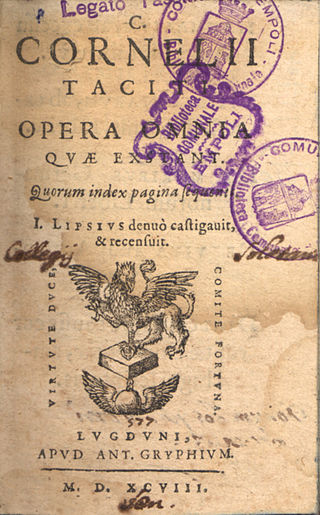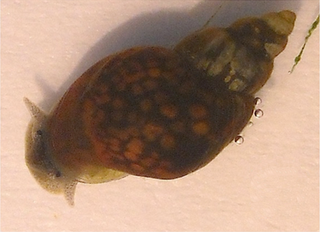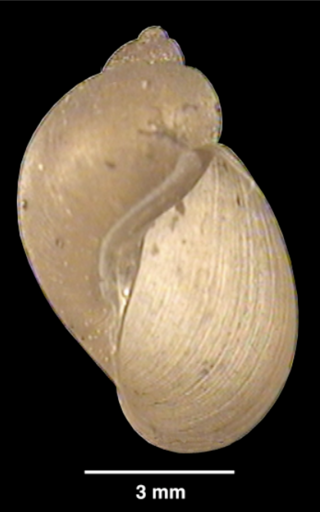
Galba was the sixth Roman emperor, ruling from AD 68 to 69. After his adoption by his stepmother, and before becoming emperor, he was known as Livius Ocella Sulpicius Galba. He was the first emperor in the Year of the Four Emperors and assumed the throne following Emperor Nero's suicide.

Marcus Otho was the seventh Roman emperor, ruling for three months from 15 January to 16 April 69. He was the second emperor of the Year of the Four Emperors.
Publius Sulpicius Galba Maximus was a Roman military officer and Senator who was elected Roman consul twice, and appointed dictator once. He fought in the Second Punic War and the First and Second Macedonian Wars.

The Year of the Four Emperors, AD 69, was the first civil war of the Roman Empire, during which four emperors ruled in succession: Galba, Otho, Vitellius, and Vespasian. It is considered an important interval, marking the transition from the Julio-Claudians, the first imperial dynasty, to the Flavian dynasty. The period witnessed several rebellions and claimants, with shifting allegiances and widespread turmoil in Rome and the provinces.

Fasciola hepatica, also known as the common liver fluke or sheep liver fluke, is a parasitic trematode of the class Trematoda, phylum Platyhelminthes. It infects the livers of various mammals, including humans, and is transmitted by sheep and cattle to humans the world over. The disease caused by the fluke is called fasciolosis or fascioliasis, which is a type of helminthiasis and has been classified as a neglected tropical disease. Fasciolosis is currently classified as a plant/food-borne trematode infection, often acquired through eating the parasite's metacercariae encysted on plants. F. hepatica, which is distributed worldwide, has been known as an important parasite of sheep and cattle for decades and causes significant economic losses in these livestock species, up to £23 million in the UK alone. Because of its relatively large size and economic importance, it has been the subject of many scientific investigations and may be the best-known of any trematode species. F. hepatica's closest relative is Fasciola gigantica. These two flukes are sister species; they share many morphological features and can mate with each other.

Histories is a Roman historical chronicle by Tacitus. Written c. 100–110, its complete form covered c. 69–96, a period which includes the Year of Four Emperors following the downfall of Nero, as well as the period between the rise of the Flavian dynasty under Vespasian and the death of Domitian. However, the surviving portion of the work only reaches the year 70 and the very beginning of the reign of Vespasian.
Lucius Calpurnius Piso Frugi Licinianus was a Roman nobleman who lived in the 1st century. His adoption by the Roman emperor Galba on 10 January 69 AD precipitated their joint murder by Otho, who had expected to be adopted instead. Otho then became the second emperor of the Year of the Four Emperors.
Servius Sulpicius Galba was a consul of Rome in 144 BC.

Galba truncatula is a species of air-breathing freshwater snail, an aquatic pulmonate gastropod mollusk in the family Lymnaeidae, the pond snails.

Lymnaeidae, common name the pond snails, is a taxonomic family of small to large air-breathing freshwater snails, aquatic pulmonate gastropod mollusks, that belong to the clade Hygrophila.

Lymnaea is a genus of small to large-sized air-breathing freshwater snails, aquatic pulmonate gastropod mollusks in the subfamily Lymnaeinae ( of the family Lymnaeidae, the pond snails.

Galba is a genus of small air-breathing freshwater snails, aquatic pulmonate gastropod mollusks in the family Lymnaeidae, the pond snails.

Galba cubensis is a species of air-breathing freshwater snail, an aquatic gastropod mollusk in the family Lymnaeidae, the pond snails.

Galba schirazensis is a species of air-breathing freshwater snail, an aquatic pulmonate gastropod mollusk in the family Lymnaeidae, the pond snails.

Galba cousini is a species of air-breathing freshwater snail, an aquatic pulmonate gastropod mollusk in the family Lymnaeidae, the pond snails.

Galba meridensis is a species of air-breathing freshwater snail, an aquatic pulmonate gastropod mollusc in the family Lymnaeidae, the pond snails.
Galba neotropica is a species of air-breathing freshwater snail, an aquatic pulmonate gastropod mollusk in the family Lymnaeidae, the pond snails.

Hydromya dorsalis is a species of fly in the family Sciomyzidae. It is found in the Palearctic. It is the only species in the genus. Males have two elongated processes on the anterior margin of the fourth abdominal sternite. Larvae of Hydromya dorsalis are adapted for aquatic life and prey on aquatic pulmonate snails: Galba truncatula, Lymnaea sp. and Stagnicola palustris. Adults are found on vegetation all year round but the main flight period is April to October. H. dorsalis is known from most of the Palaearctic and some parts of the Afrotropics countries.











